
NGC 243 is a lenticular galaxy located in the constellation Andromeda. It was discovered on October 18, 1881 by Édouard Stephan.

NGC 266 is a massive barred spiral galaxy in the constellation Pisces. NGC 266 is located at a distance of 197 megalight-years from the Milky Way. It was discovered on September 12, 1784, by William Herschel. The form of this barred galaxy is described by its morphological classification of SB(rs)ab, which indicates a quasi-ring-like structure (rs) and moderate-to-tightly wound spiral arms (ab).

NGC 267 is an open cluster in the Small Magellanic Cloud. It is located in the constellation Tucana. It was discovered on October 4, 1836, by John Herschel.

NGC 268 is a spiral galaxy located in the constellation Cetus. It was discovered on November 22, 1785 by William Herschel.

NGC 271 is a barred spiral galaxy in the constellation Cetus. It was discovered on October 1, 1785 by William Herschel.

NGC 274 is a lenticular galaxy in the constellation Cetus. It is a pair of galaxies, the other being NGC 275, which it is currently interacting with. It was discovered on September 10, 1785 by William Herschel. It is roughly 120 million light-years away.

NGC 275 is a barred spiral galaxy located approximately 63 million light-years from the Solar System in the constellation Cetus. It is one of a pair of galaxies, the other being NGC 274. It was discovered on October 9, 1828, by John Herschel.

NGC 279 is a lenticular galaxy in the constellation Cetus. It was discovered on October 1, 1785 by William Herschel.
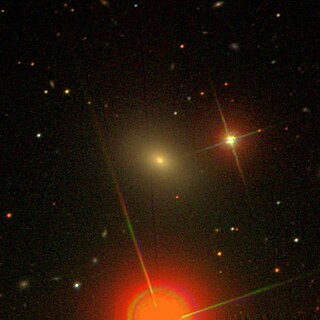
NGC 282 is an elliptical galaxy in the constellation Pisces. It was discovered on October 13, 1879 by Édouard Stephan.

NGC 283 is a spiral galaxy in the constellation Cetus. It was discovered on October 2, 1886, by Francis Leavenworth.

NGC 284 is an elliptical galaxy in the constellation Cetus. It was discovered on October 2, 1886, by Francis Leavenworth.

NGC 285 is a lenticular galaxy in the constellation Cetus. It was discovered on October 2, 1886, by Francis Leavenworth.
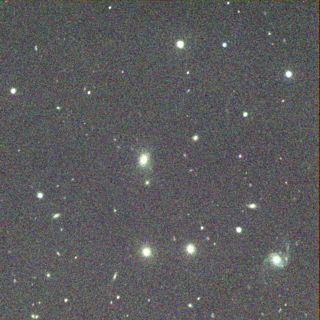
NGC 286 is a lenticular galaxy in the constellation Cetus. It was discovered on October 2, 1886 by Francis Leavenworth.

NGC 297 is an elliptical galaxy in the constellation Cetus. It was discovered on September 27, 1864, by Albert Marth and is classified as type E3, based on galaxy morphological classification.

NGC 304 is a lenticular galaxy in the constellation Andromeda. It was discovered on October 23, 1878, by Édouard Stephan.
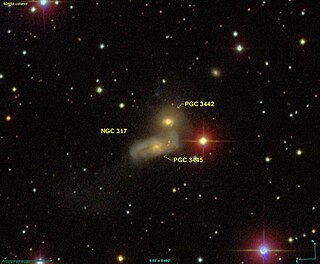
NGC 317 is a pair of interacting galaxies, consisting of a lenticular galaxy NGC 317A and a spiral galaxy NGC 317B, in the constellation Andromeda. It was discovered on October 1, 1885 by Lewis Swift.
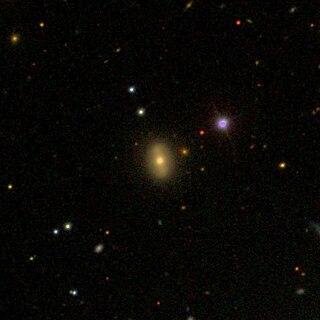
NGC 318 is a lenticular galaxy in the constellation Pisces. It was discovered on November 29, 1850 by Bindon Stoney.
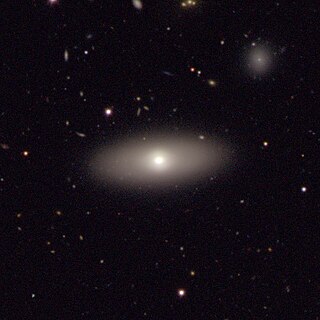
NGC 324 is a lenticular galaxy located in the constellation Phoenix. It was discovered on October 23, 1835, by John Herschel. It was described by Dreyer as "questionable, faint, small, stellar".

NGC 327 is a spiral galaxy in the constellation Cetus. It was discovered on September 27, 1864 by Albert Marth. It is described by Dreyer as "faint, small, extended." It is nearby galaxies NGC 329, NGC 325 and NGC 321.

NGC 332 is a compact and/or lenticular galaxy in the constellation Pisces. It was discovered on October 22, 1886, by Lewis Swift. It was described by Dreyer as "very faint, small, round, several stars near to south."




















